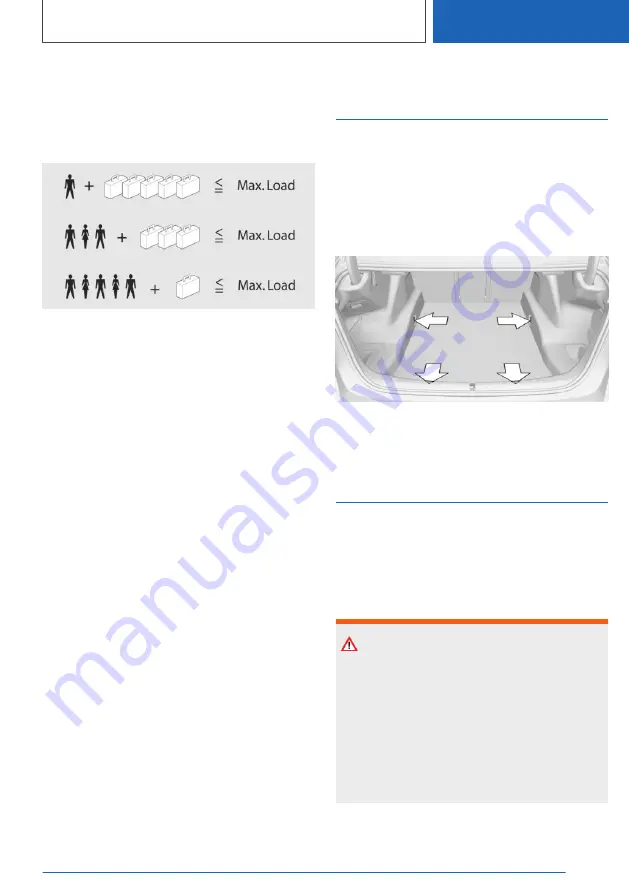
hicle. Consult this manual to determine how
this reduces the available cargo and luggage
load capacity of your vehicle.
Load
The maximum load is the sum of the weight of
the occupants and the cargo.
The greater the weight of the occupants, the
less cargo that can be transported.
Stowing and securing cargo
▷
Cover sharp edges and corners on the cargo.
▷
Heavy cargo: stow as far forward as possible,
directly behind and at the bottom of the rear
passenger seat backrests.
▷
Very heavy cargo: stow as far forward as pos‐
sible, directly behind and at the bottom of the
rear passenger seat backrests. When the rear
seat is not occupied, secure each of the outer
safety belts in the opposite buckle.
▷
If necessary, fold down the rear backrests to
stow large cargo.
▷
Do not stack cargo above the top edge of the
backrests.
▷
Smaller and lighter cargo: secure with ratchet
straps or with a cargo net or draw straps.
▷
Larger and heavy cargo: secure with cargo
straps.
Lashing eyes in the cargo
area
General information
Attach load securing aids, such as lashing straps,
tensioning straps, draw straps or cargo nets, to
the lashing eyes in the cargo area.
Lashing eyes
There are four lashing eyes in the cargo area for
securing cargo.
Multi-function hook
General information
A multi-function hook is located on the left side
in the cargo area.
Safety information
Warning
Improper use of the multi-function hooks can
lead to a risk of objects flying about during
braking and evasive maneuvers, for example.
There is a risk of injury and risk of damage to
property. Only hang lightweight objects,
such as shopping bags, from the multi-function
hooks. Only transport heavy luggage in the
cargo area if it has been appropriately secured.
Seite 301
Cargo area
CONTROLS
301
Online Edition for Part no. 01405A11338 - VI/20
















































